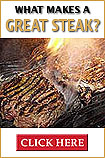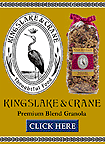|
Test Created for Wine Headache Chemicals
By MARCUS WOHLSEN
BERKELEY,
Calif. (AP) - The effects are all too familiar: a fancy
dinner, some fine wine and then, a few hours later, a racing heart
and a pounding headache. But a device developed by University
of California, Berkeley, researchers could help avoid the dreaded
"red wine headache."
Chemists working
with NASA-funded technology designed to find life on Mars have
created a device they say can easily detect chemicals that many
scientists believe can turn wine and other beloved indulgences
into ingredients for agony.
The chemicals,
called biogenic amines, occur naturally in a wide variety of aged,
pickled and fermented foods prized by gourmet palates, including
wine, chocolate, cheese, olives, nuts and cured meats.
"The food
you eat is so unbelievably coupled with your body's chemistry,"
said Richard Mathies, who described his new technology in an article
published Thursday in the journal Analytical Chemistry.
Scientists have
nominated several culprits for "red wine headache,"
including amines like tyramine and histamine, though no conclusions
have been reached. Still, many specialists warn headache sufferers
away from foods rich in amines, which can also trigger sudden
episodes of high blood pressure, heart palpitations and elevated
adrenaline levels.
The detector could
prove useful to those with amine sensitivity, said Beverly McCabe,
a clinical dietitian and co-author of "Handbook of Food-Drug
Interactions," a book cited by the article for its descriptions
of the effects of amines on the brain.
The prototype -
the size of a small briefcase - uses a drop of wine to determine
amine levels in five minutes, Mathies said. A startup company
he co-founded is working to create a smaller device the size of
a personal digital assistant that people could take to restaurants
and test their favorite wines.
The researchers
found the highest amine levels in red wine and sake and the lowest
in beer. For now, the device only works with liquids.
Mathies suggests
the device could be used to put amine levels on wine labels.
"We're aware of the consumer demand for information. But
that has to be tempered by the manner in which wine is made,"
said Wendell Lee, general counsel for the Wine Institute, a California
industry trade group.
|













